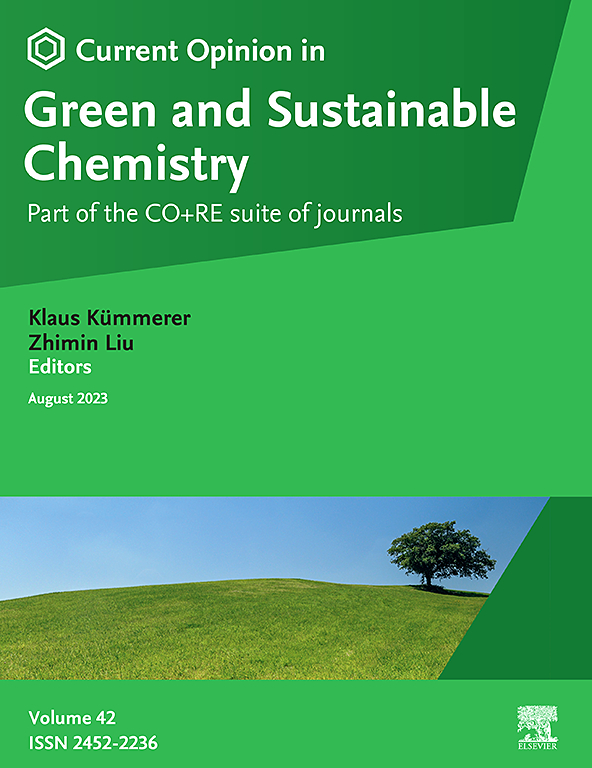污水处理等离子体-液体系统的反应器设计
IF 9.4
2区 化学
Q1 CHEMISTRY, MULTIDISCIPLINARY
Current Opinion in Green and Sustainable Chemistry
Pub Date : 2025-03-19
DOI:10.1016/j.cogsc.2025.101023
引用次数: 0
摘要
低温等离子体(LTPs)是一种很有前途但经常引起争议的水处理技术,它具有降解持久性污染物的独特能力。尽管在实验和中试规模上都取得了成功,但与其他高级氧化工艺相比,基于ltp的处理面临着高能耗和有限的可扩展性的质疑。这篇观点文章提倡等离子体研究的战略重新定位,敦促科学界优先考虑相关污染物和现实水基质的研究,同时应用化学工程原理系统地描述这些系统,并制定指导水处理等离子体反应器设计的普遍规律。模块化反应器布置、预浓缩策略、实际测试以及对污染物类型(表面活性剂与非表面活性剂)如何影响反应器设计的清晰理解,对于推进LTP技术超越概念验证研究至关重要。为了实现商业可行性,研究必须从试错法过渡到整合等离子体物理、化学和工程的系统研究。本文章由计算机程序翻译,如有差异,请以英文原文为准。
Reactor design in plasma-liquid systems for wastewater treatment
Low-temperature plasmas (LTPs) represent a promising yet often controversial technology for water treatment that offer unique capabilities for degrading persistent contaminants. Despite demonstrated success at both bench and pilot scales, LTP-based treatment faces skepticism due to perceptions of high energy consumption and limited scalability compared to other advanced oxidation processes.
This opinion piece advocates for a strategic reorientation in plasma research, urging the scientific community to prioritize the study of relevant contaminants and realistic water matrices while applying chemical engineering principles to systematically describe these systems and develop universal laws guiding plasma reactor design for water treatment. Modular reactor arrangements, pre-concentration strategies, real-world testing, and a clear understanding of how contaminant type (surfactant vs. non-surfactant) influences reactor design are essential for advancing LTP technology beyond proof-of-concept studies. To achieve commercial viability, research must transition from trial-and-error approaches to systematic investigations integrating plasma physics, chemistry, and engineering.
求助全文
通过发布文献求助,成功后即可免费获取论文全文。
去求助
来源期刊

Current Opinion in Green and Sustainable Chemistry
Chemical Engineering-Catalysis
CiteScore
16.00
自引率
2.20%
发文量
140
审稿时长
103 days
期刊介绍:
The Current Opinion journals address the challenge specialists face in keeping up with the expanding information in their fields. In Current Opinion in Green and Sustainable Chemistry, experts present views on recent advances in a clear and readable form. The journal also provides evaluations of the most noteworthy papers, annotated by experts, from the extensive pool of original publications in Green and Sustainable Chemistry.
 求助内容:
求助内容: 应助结果提醒方式:
应助结果提醒方式:


